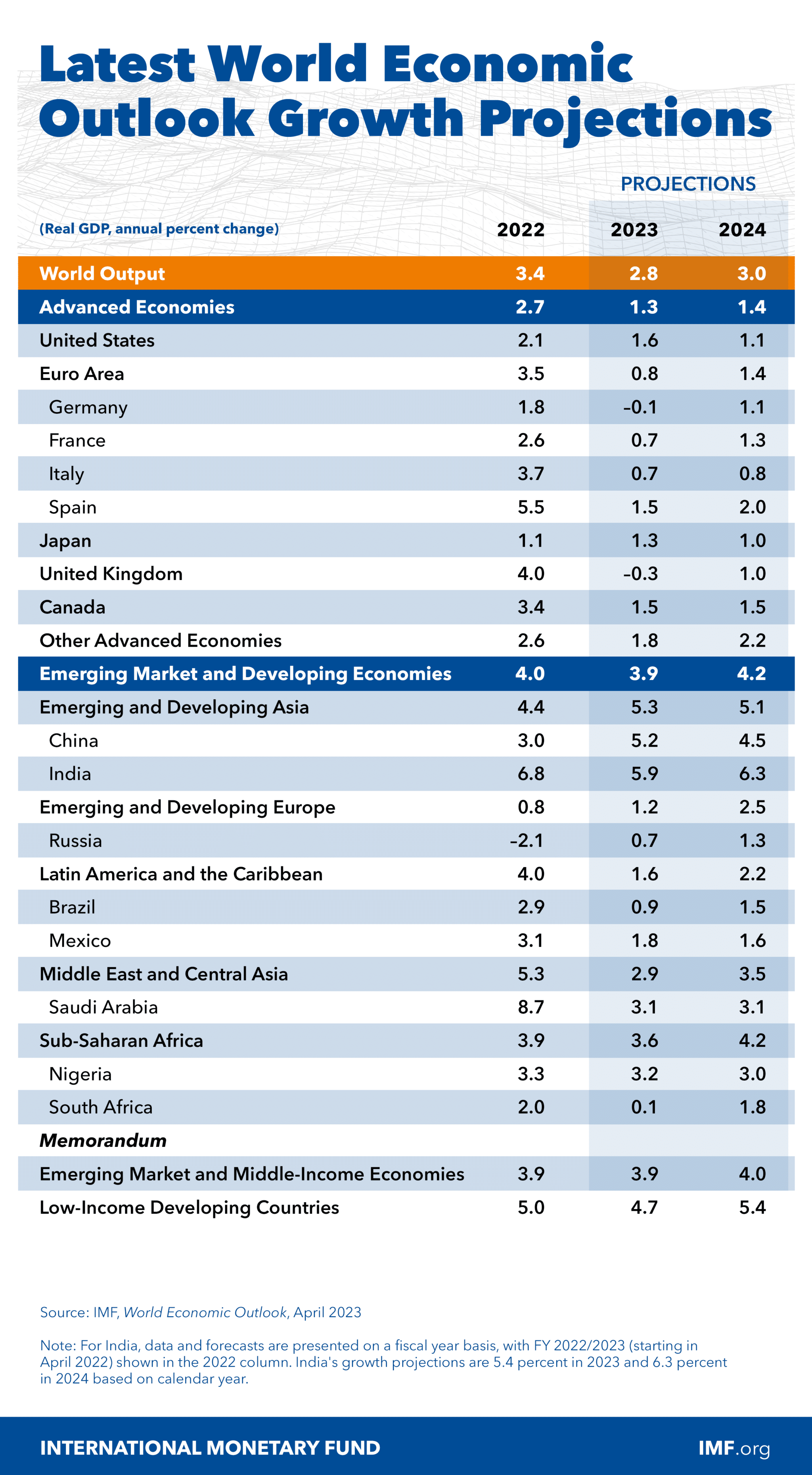The baseline forecast is for growth to fall from 3.4 percent in 2022 to 2.8 percent in 2023, before settling at 3.0 percent in 2024. Advanced economies are expected to see an especially pronounced growth slowdown, from 2.7 percent in 2022 to 1.3 percent in 2023. In a plausible alternative scenario with further financial sector stress, global growth declines to about 2.5 percent in 2023 with advanced economy growth falling below 1 percent. Global headline inflation in the baseline is set to fall from 8.7 percent in 2022 to 7.0 percent in 2023 on the back of lower commodity prices but underlying (core) inflation is likely to decline more slowly. Inflation’s return to target is unlikely before 2025 in most cases.
The natural rate of interest is important for both monetary and fiscal policy as it is a reference level to gauge the stance of monetary policy and a key determinant of the sustainability of public debt. Chapter 2 aims to study the evolution of the natural rate of interest across several large advanced and emerging market economies. Public debt as a ratio to GDP soared across the world during COVID-19 and is expected to remain elevated. Chapter 3 examines the effectiveness of different approaches to reducing debt-to-GDP ratios. Supply-chain disruptions and rising geopolitical tensions have brought the risks and potential benefits and costs of geoeconomic fragmentation to the center of the policy debate. Chapter 4 studies how such fragmentation can reshape the geography of foreign direct investment FDI and how it can affect the global economy.

Further links
